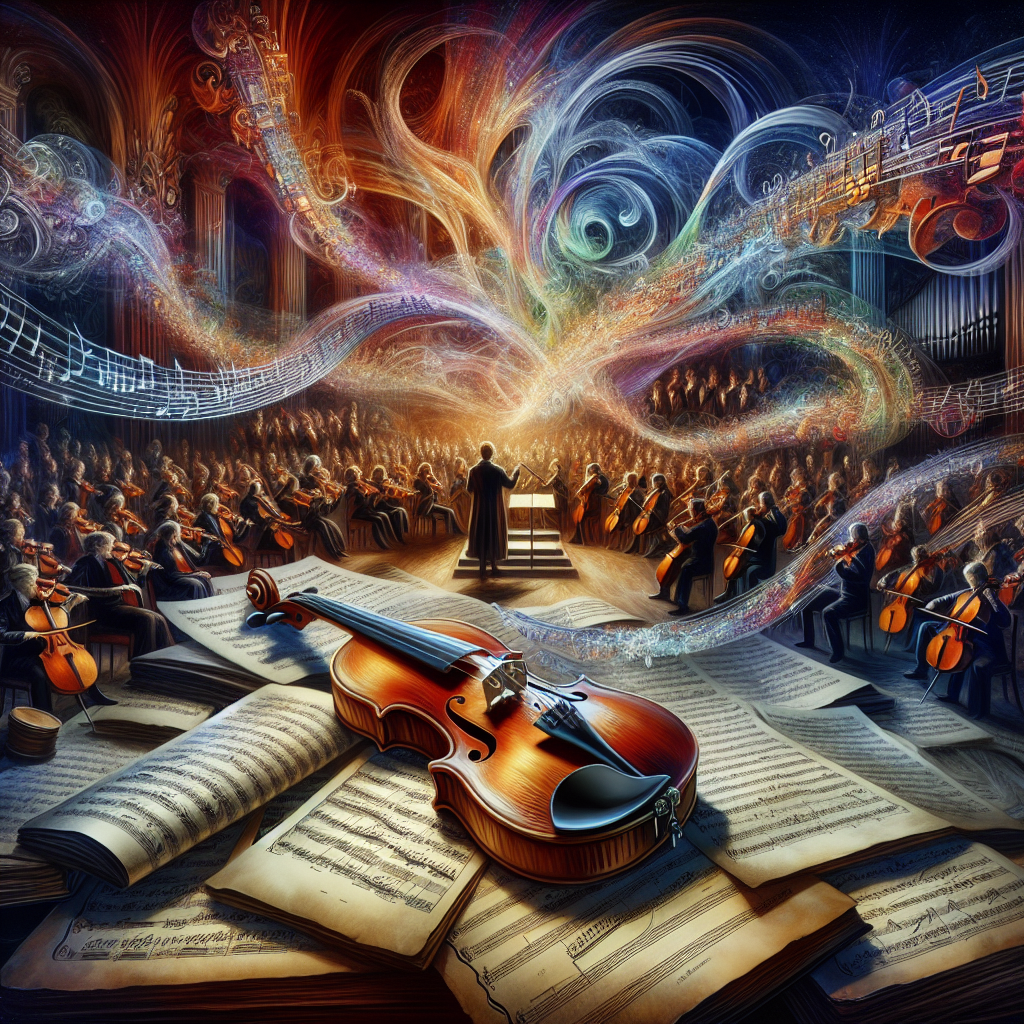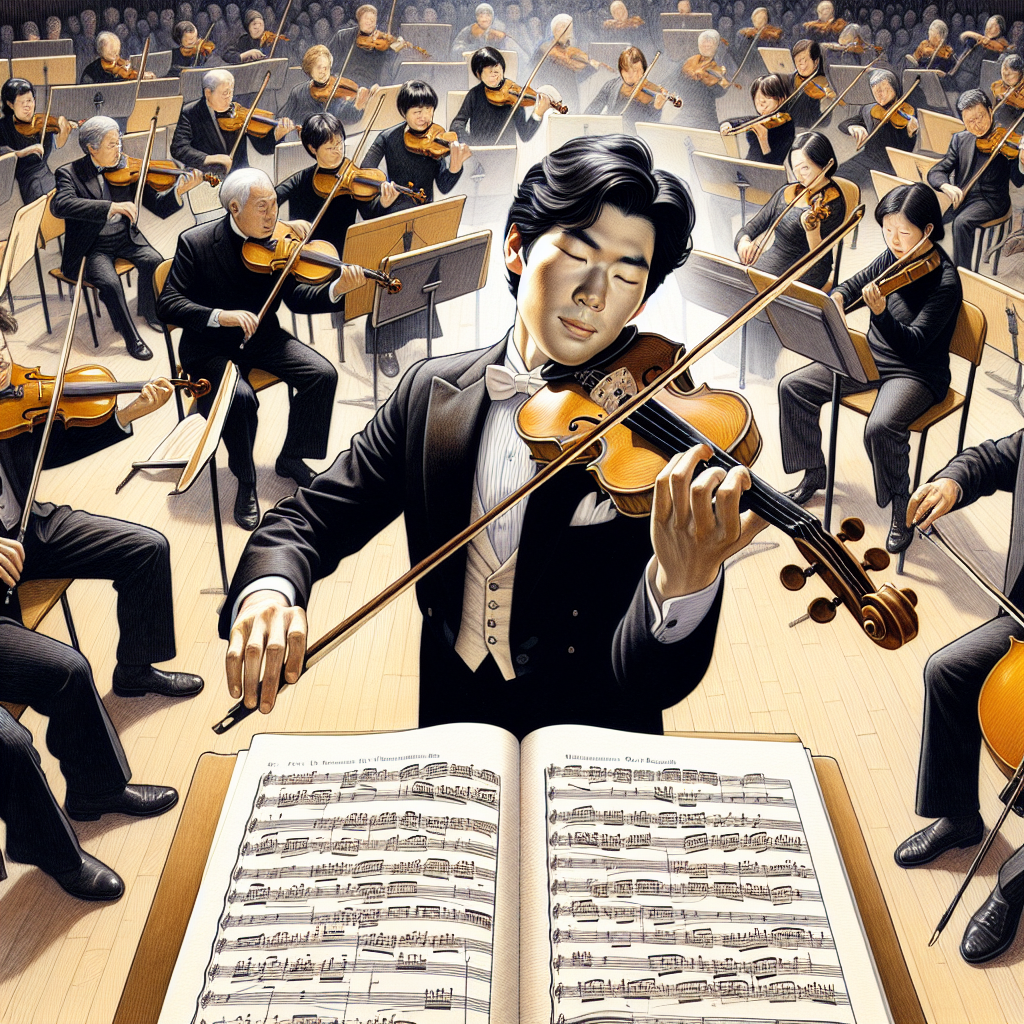
Rediscovering Beethoven’s Only Violin Concerto: A Historical Insight
When it comes to classical music, few names resonate as powerfully as Ludwig van Beethoven. His works have stood the test of time, continuously inspiring both musicians and audiences worldwide. While Beethoven is renowned for his symphonies, sonatas, and concertos, one particular piece deserves special attention—his single violin concerto, Op. 61 in D major.
This concerto, written in 1806, stands as a testament to Beethoven’s ability to blend technical complexity with profound emotional expression. Unlike his piano concertos, which were often vehicles for Beethoven himself to perform, the Violin Concerto in D major was designed for virtuosic solos by other musicians. It marked a bold new direction in Beethoven’s compositional style and has since become a staple in the violin repertoire.
The Violin Concerto was premiered on December 23, 1806, in Vienna. Unfortunately, the initial reception was lukewarm, partly because the violinist, Franz Clement, reportedly overlooked the rehearsals and had to sight-read parts of the solo. However, the concerto would eventually be recognized for its genius, especially after the 1844 revival by virtuoso violinist Joseph Joachim, under the baton of Felix Mendelssohn. Today, it is hailed as one of the greatest violin concertos ever composed, a true testament to Beethoven’s ingenuity.
In this article, we will delve into the historical context of the concerto, explore its composition, discuss its unique features, and understand its lasting influence on classical music. Join us on this journey of rediscovering Beethoven’s only violin concerto.
The Historical Context of Beethoven’s Violin Concerto
The early 19th century was a period of considerable change and turmoil. Beethoven composed his Violin Concerto against the backdrop of the Napoleonic Wars, a time when Europe was rife with political upheaval. Despite these external distractions, Beethoven was entering what many consider his “middle period” or “heroic phase,” characterized by greater emotional depth and compositional innovation.
In 1806, Beethoven was financially supported by several wealthy patrons, including Archduke Rudolph of Austria, Prince Lobkowitz, and Prince Kinsky. This support provided Beethoven with the stability needed to focus on his work, even as he grappled with his worsening hearing loss. The Violin Concerto, therefore, came at a pivotal moment in his life, representing both a personal and artistic milestone.
Beethoven’s relationship with violinist Franz Clement, to whom the concerto is dedicated, was also significant. Clement was a child prodigy and a prominent figure in Vienna’s musical circles. Beethoven saw in Clement a musician capable of bringing his virtuosic and emotionally complex concerto to life. Although their partnership had its challenges, it ultimately contributed to the concerto’s enduring success.
Despite the initial lukewarm reception, the historical context and the relationships that influenced the concerto played a crucial role in its revival and subsequent acclaim. By understanding the environment in which Beethoven composed, we can gain a deeper appreciation of the concerto’s significance and its place in the broader spectrum of his work.
An Examination of the Concerto’s Composition
The Violin Concerto in D major, Op. 61, is composed in three movements: Allegro ma non troppo, Larghetto, and Rondo: Allegro. Each movement showcases a different facet of Beethoven’s compositional prowess, blending technical demands with lyrical beauty.
The first movement, Allegro ma non troppo, opens with a drum solo—a bold and unconventional choice that immediately sets the tone for the piece. This is followed by the introduction of the main themes by the orchestra before the violin enters with an intricate and expressive solo. The movement is notable for its length and complexity, requiring the soloist to display both technical skill and emotional depth.
The second movement, Larghetto, provides a contrast with its serene and lyrical qualities. The orchestra sets a tranquil atmosphere, allowing the violin to weave a delicate, song-like melody. This movement exemplifies Beethoven’s ability to evoke profound emotion through relatively simple musical ideas.
The final movement, Rondo: Allegro, returns to a more spirited and lively character. The rondo form features a recurring main theme interspersed with contrasting episodes, providing a sense of joyful exuberance. The movement concludes with a brilliant coda, showcasing the soloist’s virtuosity and bringing the concerto to a triumphant close.
The concerto’s structure and thematic development reveal Beethoven’s mastery of form and his innovative approach to orchestration. By integrating the violin and orchestra so seamlessly, Beethoven created a dialogue that is both intricate and natural, setting a new standard for violin concertos.

The Unique Features of Beethoven’s Violin Concerto
One of the most distinctive aspects of Beethoven’s Violin Concerto is its utilization of the violin as a narrative voice. Unlike many of his contemporaries, Beethoven treats the violin not merely as a vehicle for technical display but as an instrument capable of deep emotional expression. This approach requires the soloist to balance technical proficiency with interpretative sensitivity.
The orchestration is another unique feature. Beethoven employs the orchestra not just as an accompaniment but as an equal partner in the musical conversation. This is particularly evident in the first movement, where the orchestra introduces all the main themes before the solo violin takes over. The interplay between the soloist and the orchestra creates a rich tapestry of sound that maintains listener interest throughout the concerto.
Another noteworthy feature is Beethoven’s innovative use of rhythm and dynamics. The concerto is filled with unexpected rhythmic shifts and dynamic contrasts that keep both the performer and the audience engaged. These elements contribute to the sense of drama and urgency that pervades the concerto, making each performance a unique experience.
Moreover, Beethoven’s solo writing often pushes the boundaries of the violin’s capabilities, demanding advanced techniques such as spiccato, double stops, and rapid shifts across the instrument’s range. These challenges require the soloist to have a high level of technical skill, further elevating the work’s status as a virtuosic showpiece.
By blending these unique features, Beethoven created a concerto that is both technically demanding and emotionally profound, offering listeners a comprehensive exploration of the violin’s expressive potential.
The Influence and Legacy of Beethoven’s Violin Concerto
Since its revival by Joseph Joachim in the mid-19th century, Beethoven’s Violin Concerto has had a profound impact on both the violin repertoire and the broader world of classical music. It set a new standard for violin concertos, influencing numerous composers such as Brahms, Mendelssohn, and Tchaikovsky, who sought to emulate Beethoven’s blend of technical prowess and emotional depth in their own concertos.
Performers, too, have found in this piece a benchmark for evaluating their technical and interpretative skills. Many of the world’s leading violinists, from Yehudi Menuhin and Itzhak Perlman to Anne-Sophie Mutter and Hilary Hahn, have made recordings of the concerto, each bringing their unique interpretation to the work. These performances continue to shed new light on the concerto’s manifold nuances, ensuring its place as a beloved staple in the concert repertoire.
The concerto’s influence extends beyond the concert hall. It has been featured in numerous films, television shows, and commercials, bringing Beethoven’s genius to a wider audience. The opening drumbeat and the lyrical themes have become instantly recognizable, cementing the concerto’s status as a cultural icon.
Educationally, Beethoven’s Violin Concerto is frequently studied in music conservatories around the world. Aspiring violinists look to it as a model of both technical and musical excellence, while musicologists examine its structure and themes to gain insights into Beethoven’s compositional techniques. The concerto serves as a gateway into the broader study of Beethoven’s oeuvre, offering a glimpse into his genius for both performers and scholars alike.
Conclusion
Beethoven’s Violin Concerto in D major, Op. 61, is a landmark in the history of classical music. Written during a pivotal period in Beethoven’s life, it showcases his innovative approach to composition, blending technical demands with emotional depth. Despite its initial lukewarm reception, the concerto has since been recognized as one of the greatest works in the violin repertoire, thanks in large part to its revival by Joseph Joachim.
The concerto’s unique features, from its bold orchestration to its expressive use of the violin, have influenced generations of composers and performers. Its structure and thematic development reveal Beethoven’s mastery of form, while its rhythmic and dynamic innovations keep both performers and audiences engaged. Through countless performances and recordings, the concerto continues to inspire and captivate listeners worldwide.
Beyond its immediate musical impact, Beethoven’s Violin Concerto has also made a lasting cultural impression. Its themes have permeated popular culture, making Beethoven’s genius accessible to new audiences. Educationally, it remains a cornerstone of violin pedagogy, offering invaluable insights into Beethoven’s artistry.
In rediscovering Beethoven’s only violin concerto, we not only celebrate a remarkable piece of music but also gain a deeper understanding of the man behind the compositions. Beethoven’s ability to convey profound emotion through his music continues to resonate, reminding us of the enduring power of great art. As we listen to the sublime interplay between the violin and the orchestra, we are reminded of Beethoven’s timeless genius and the lasting legacy of his work.